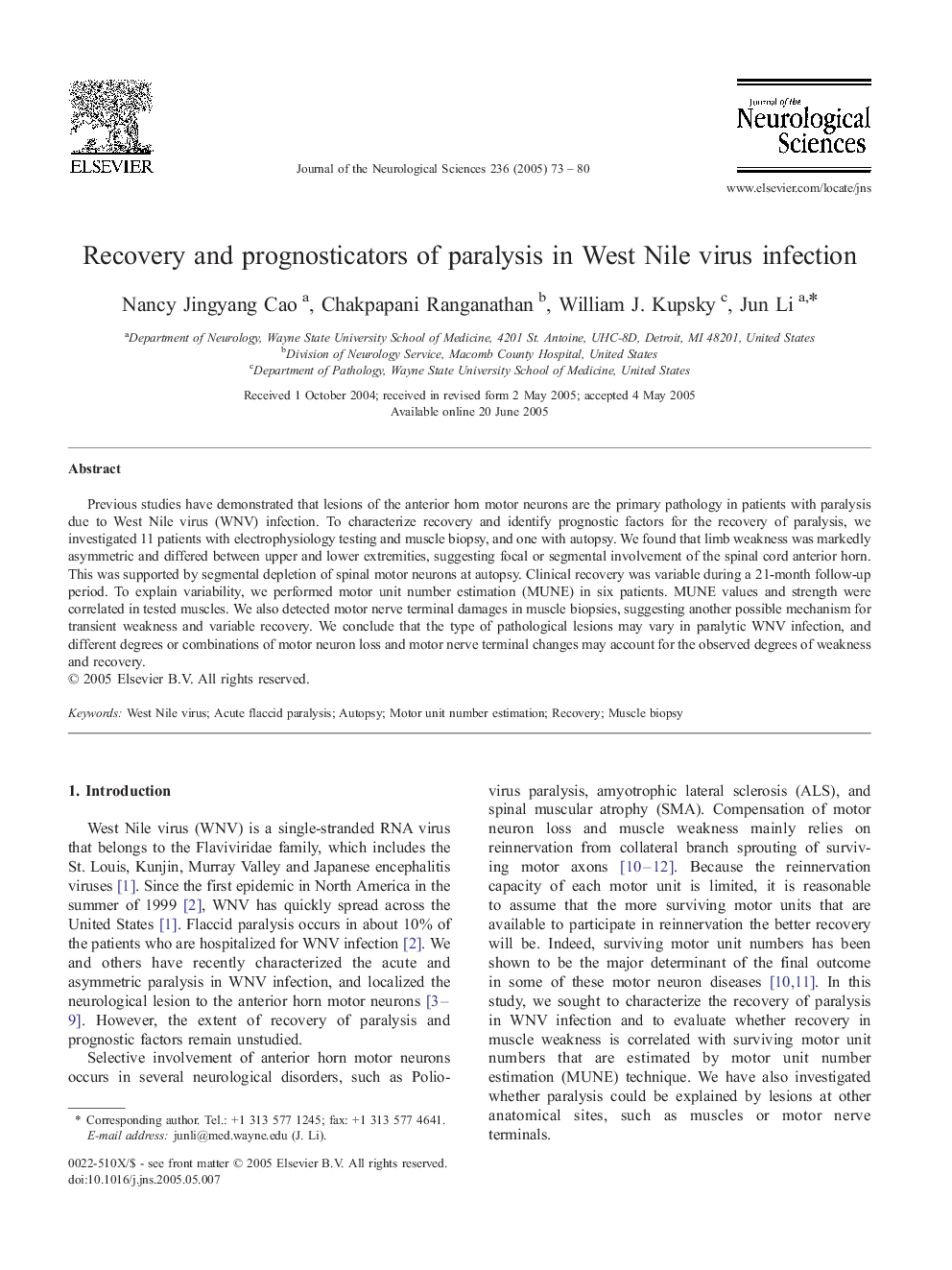| Article ID | Journal | Published Year | Pages | File Type |
|---|---|---|---|---|
| 9880252 | Journal of the Neurological Sciences | 2005 | 8 Pages |
Abstract
Previous studies have demonstrated that lesions of the anterior horn motor neurons are the primary pathology in patients with paralysis due to West Nile virus (WNV) infection. To characterize recovery and identify prognostic factors for the recovery of paralysis, we investigated 11 patients with electrophysiology testing and muscle biopsy, and one with autopsy. We found that limb weakness was markedly asymmetric and differed between upper and lower extremities, suggesting focal or segmental involvement of the spinal cord anterior horn. This was supported by segmental depletion of spinal motor neurons at autopsy. Clinical recovery was variable during a 21-month follow-up period. To explain variability, we performed motor unit number estimation (MUNE) in six patients. MUNE values and strength were correlated in tested muscles. We also detected motor nerve terminal damages in muscle biopsies, suggesting another possible mechanism for transient weakness and variable recovery. We conclude that the type of pathological lesions may vary in paralytic WNV infection, and different degrees or combinations of motor neuron loss and motor nerve terminal changes may account for the observed degrees of weakness and recovery.
Keywords
Related Topics
Life Sciences
Biochemistry, Genetics and Molecular Biology
Ageing
Authors
Nancy Jingyang Cao, Chakpapani Ranganathan, William J. Kupsky, Jun Li,
